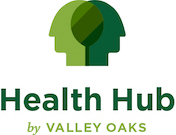To the 8 million diagnosed Americans experiencing post-traumatic stress disorder (PTSD), we are here to support you on your road to recovery. For those who remain undiagnosed and suffer from enduring trauma, you are not alone; treatment is available. To those who have witnessed the searing pain a loved one relives over and over again, your sorrow and grief are not invisible.
June is PTSD Awareness Month. Please help Valley Oaks spread the word that those who live with unbearable symptoms deserve our unconditional support. What they have experienced can never be erased, yet treatment and therapy can restore their lives.
Signs and symptoms
Warning signs that you or someone you care about may need intervention include:
- Reliving what happened in vivid flashbacks, nightmares or intense distress accompanied by physical signs such as unexplainable pain, sweat, nausea, shaking, or vomiting
- Feeling instant panic or anxiety when reminded of the incident
- Hypervigilance in situations when unnecessary
- Lack of or frequently interrupted sleep
- Aggressive behavior and extreme irritability
- Being easily startled or jumpy
- Self-destructive or reckless behavior
- Lack of concentration
- Avoidance of expressing feelings or discussing memories
- An inability to express emotion to loved ones
- Physically or emotionally numbing oneself with alcohol or other substances
- Lack of trust in once close circles
- Feeling like no one understands or relates to the endured trauma
- Assigning blame to yourself or others for what happened
- Overwhelming and unmanageable guilt, sadness, shame or anger
Causes
PTSD knows no boundaries. Anyone at any age can develop it after experiencing a life-altering event. Trauma-inducing situations can include:
- Exposure to violence
- Military combat
- Car accidents
- Sexual assault
- Abuse, harassment or being bullied
- Witnessings others being victimized
- Exposure to distressing images or situations because one’s line of work
- Traumatic childbirth
- Surviving a natural disaster, terror attack or hostage situation
- Diagnosis of a life-threatening condition
- Loss of someone close to you, particularly if their death occurred during upsetting circumstances
- Surviving a dangerous situation
- Experiencing poverty
Healing
The shock of what was endured may be so great that people living with PTSD feel like they will never experience a “normal life” again. The road to wellness may be complicated and lengthy, yet short- and long-term treatments are available, including therapy and medication. When paired together, some sufferers find the combination useful to regain stamina.
Here are some of the treatments mental health professionals discuss and work through with their PTSD patients:
- Cognitive Processing Therapy – A twelve-week course of treatment where the patient speaks in great detail about the event with their therapist, then writes about the traumatic event. This process examines what happened then strategizes ways to live with the memories and feelings.
- Prolonged Exposure Therapy – In these eight-to-fifteen sessions with a therapist, patients learn breathing techniques to ease bouts of anxiety when flashbacks occur. Lists are also made of what the sufferer has been avoiding, then skills are learned to face each one head-on. This also includes a session where the traumatic event is recounted to the therapist while being recorded, then the patient listens at home and digests their story.
- Eye Movement Desensitization and Reprocessing – The purpose of EMD is to think about positive things rather than relive the painful flashbacks or feelings of anxiety. Therapists teach concentration techniques, including focusing on a sound, light or movement rather than allowing dark thoughts to take over.
- Stress Inoculation Training – SIT is a form of cognitive-behavioral therapy. Participants can meet alone with their therapist or in a group setting. The purpose is not to focus on the stressful event but rather to begin dealing with the event’s memories and stressors in a different way. Pressure point massage and breathing techniques are learned to help relax the mind and body when anxiety and stress arise.
- Medication – When the brain perceives imagined threats as real and imminent, the balance of neurotransmitters is off-kilter. This is a situation where medication may help. Not everyone’s stressors are the same, nor is the way psychotropic drugs help patients. Remaining under a doctor’s supervision is critical while adjusting to medications. Whether a patient is dealing with insomnia, nightmares, depression or other conditions, the dosage and purpose of the prescriptions is essential and may take an adjustment period before seeing concrete results. Medications are not a magic wand for symptoms, yet they can help take away the intensity of symptoms and help you manage your emotions while reengaging in life.
If you or someone you love is battling PTSD, Valley Oaks offers eye movement desensitization and reprocessing (EMDR) and other therapies to provide you with a path toward healing. Learn more today.







